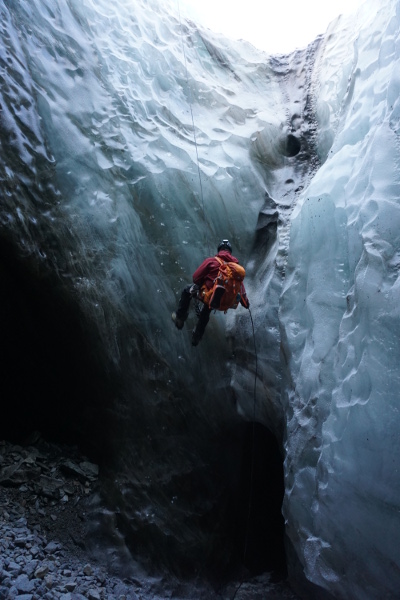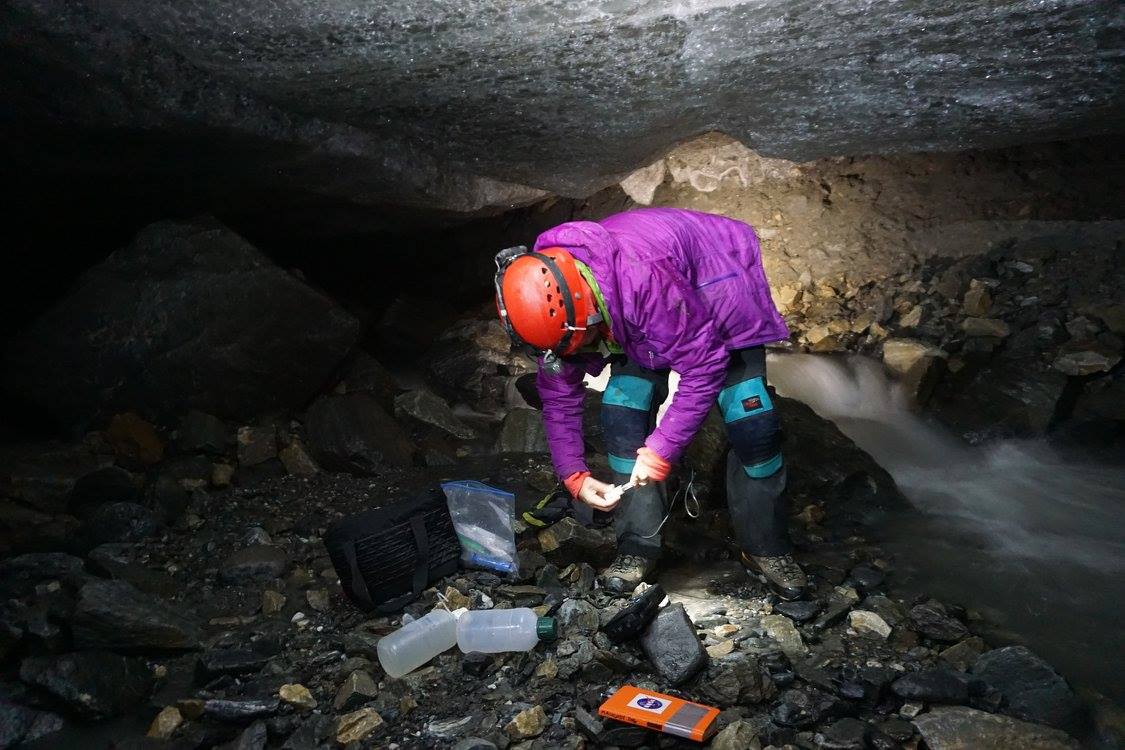
In fall of 2016, I participated in a National Geographic sponsored glacier cave expedition to the Polish Polar Station at Hornsund. The expedition was lead by Ken Mankoff (Penn State). Geomicrobiologist Jenn Macalady (Penn State) and italian geologist/caver/mountaineer Maurizio Mainiero filled out the team. Following up on prior work, the focus of the expedition was 3D scanning within glacier caves. We hoped to better characterize the roughness of subglacial conduits and the impacts that conduit geometry has on subglacial water flow and pressure. In general, glacier caves play an important role in routing meltwater from glacial surfaces to the toe of the glacier. The efficiency of these flow paths can have a strong influence on the speed at which a glacier slides. However, current models of these flow paths are relatively poorly constrained due to a general lack of data. Our trips to the belly of the glacier were aimed at filling this data gap. Our trip was plagued by warm temperatures that made the field work challenging (due to high water in the caves). However, we had just enough days below freezing to collect the critical data we needed.
We acknowledge the valuable support of both the National Geographic Society’s Research and Exploration fund and the Polish Institute of Geophysics, which were our hosts in Hornsund.
